Orange Peel Tea Using Fresh or Dried Peels
This Orange Peel Tea recipe is a super healthy hot drink made by simmering organic orange peels in water, with options to add flavors like cinnamon. Full of vitamin C and antioxidants, it’s a great health-promoting beverage. I’m sharing how to make it using fresh or dried orange peels.
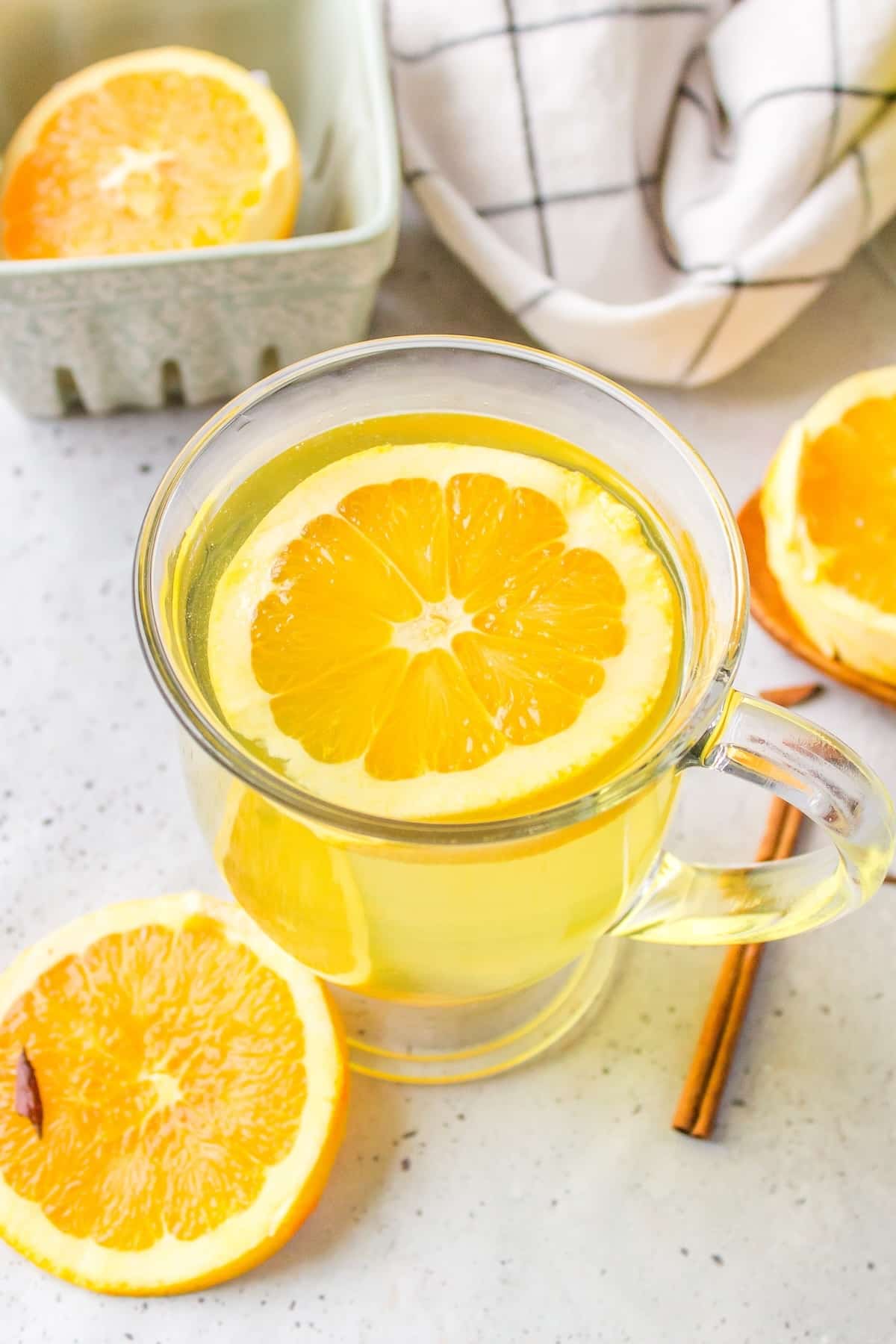
Orange Peel Tea is one of my most favorite healthy tea recipes. It essentially tastes like orange tea and is full of flavor. Plus, it’s great for reducing waste because you can make it using leftover orange peels.
In this recipe post, I’m sharing the potential benefits from a cup of orange peel tea, plus step-by-step instructions for how to make it using either fresh orange peels or dried peels.
Orange Peel Tea Potential Health Benefits
Orange peel tea, derived from the peels of citrus fruits, offers several health benefits, as indicated by various scientific studies.
Brain Health
One of the notable benefits is its potential role in enhancing brain health. Citrus flavonoids found in orange peels, such as nobiletin, have shown promise in improving cognitive impairment and reducing the risk of neurodegenerative disorders like Alzheimer’s and Parkinson’s diseases.
Anti-cancer Benefits
Additionally, the extracts and essential oils from citrus peels, including orange peels, have demonstrated significant anticancer activity in scientific studies.
For instance, mandarin orange peels showed notable activity against cancer cell lines and helped induce apoptosis (programmed cell death) in these cells. This suggests a potential use of citrus peels as cancer-preventive food additives and as anticancer agents.
Anti-inflammatory Properties
Furthermore, orange peels are rich in flavonoids and have been associated with antioxidant and anti-inflammatory activities. These properties contribute to the overall health benefits of consuming citrus peel-based products like orange peel tea.
These findings highlight the diverse and significant health benefits of orange peel tea, particularly in the realms of brain health, cancer prevention, and its antioxidant and anti-inflammatory properties.
Ingredients Needed
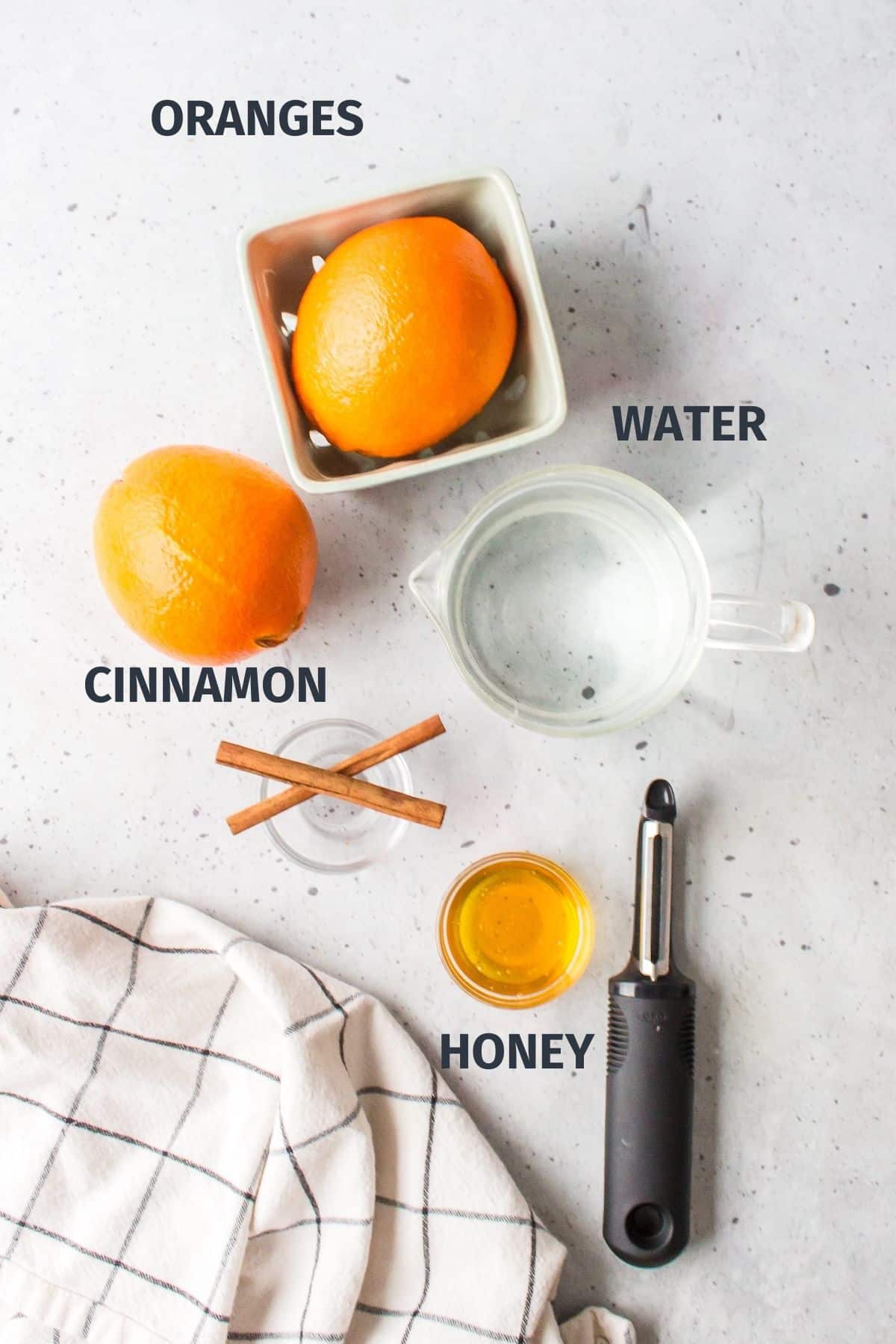
Oranges
Orange peels are rich in vitamin C and antioxidants, which can support immune system function and skin health.
They also contain flavonoids like nobiletin, linked to brain health benefits and potentially reducing the risk of neurodegenerative diseases and cancer.
I like to use organic oranges or dried organic orange peel for this recipe. Look for whole oranges at the grocery store where the citrus fruit is. You can use any type of orange including nave l oranges.
Honey
Honey adds natural sweetness and has antibacterial properties, antimicrobial properties, and anti-inflammatory properties. It’s also known for soothing sore throats and can add a comforting element to this tasty tea.
Cinnamon sticks
Cinnamon is known for its anti-inflammatory and antioxidant properties. It adds a warm, spicy flavor to the tea and can help regulate blood sugar levels which can support healthy weight loss.
Recipe Steps
Step One
Prep your tea by washing the oranges well.
Then, use a vegetable peeler or a paring knife to peel the oranges, aiming to get only the orange part of the fresh peel and minimizing the white pith which can have a bitter taste.
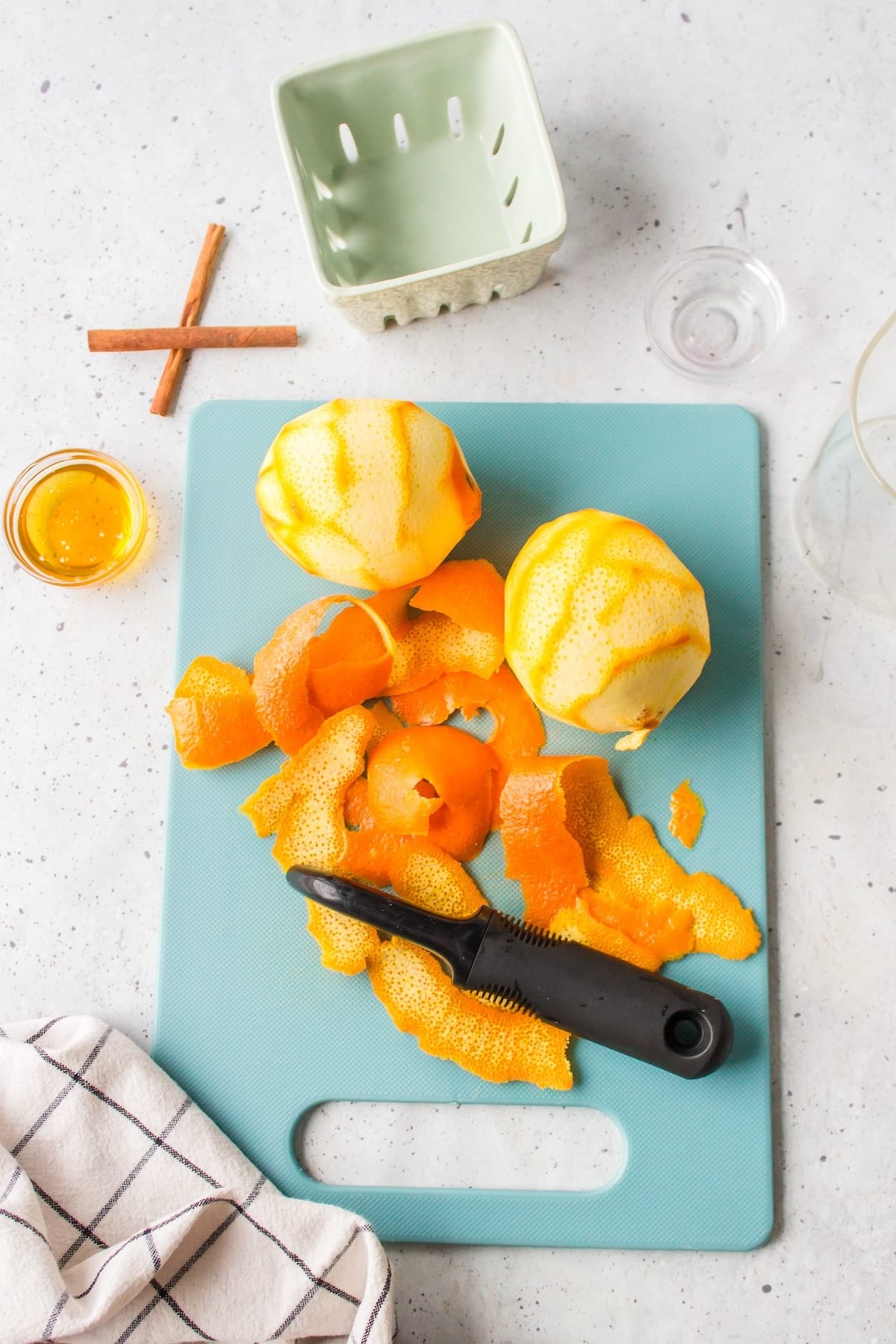
Step Two
Bring your water to a gentle boil in a pot.
Once boiling, add the orange peels and cinnamon stick to the hot water. Reduce the heat and let it simmer for about 10 minutes. The longer you simmer, the more intense the flavor.
Please see the recipe card at the end of this post for the exact ingredients and measurements.
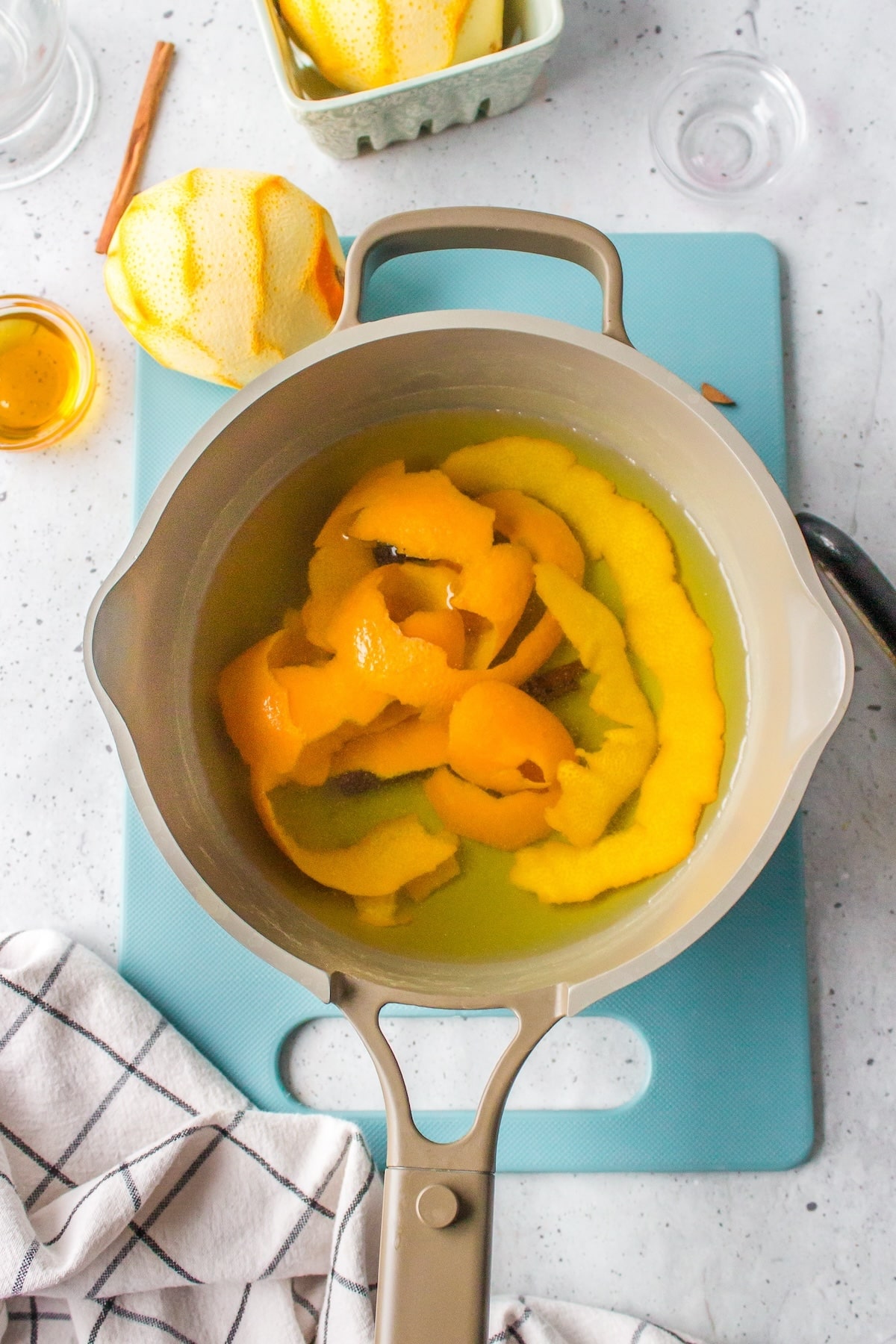
Step Three
Strain the tea into cups, removing the orange peels and cinnamon stick.
Step Four
Sweeten with honey or your preferred sweetener. Serve hot or at room temperature. You could even chill it and then serve it iced with ice cubes as opposed to a hot tea.
I hope you love this simple recipe for homemade orange peel tea! I love it and make it for both its medicinal properties and because it just tastes so good.
Recipe Tips
- You can also add ginger slices to the pot for additional flavor and health benefits. I suggest peeling and slicing about a 1-inch piece of ginger if you want to include it in the pot with the orange peels.
- You can also make this recipe using dried orange peels. Simply measure out 1 tablespoon of dried orange peels per cup of water and follow the instructions above.
- You can easily double or triple this recipe. Let the tea cool and then store it in a covered glass jar in the refrigerator. Reheat before serving.
- Use filtered water to make your tea to avoid any chlorine flavor.
Potential Side Effects
Orange Peel Tea is generally considered safe and beneficial when consumed in moderation. It’s caffeine-free and has a history of use in traditional Chinese medicine.
However, there are a few potential side effects to be aware of:
- Pesticide Residue: Orange peels can contain high levels of pesticide residue if the navel oranges were conventionally farmed. It’s recommended to use organic oranges or thoroughly wash the peels to reduce exposure to pesticides.
- Digestive Upset: Consuming large amounts of orange peel tea can lead to digestive system upset due to its high vitamin C content. Stick with one cup a day until you know it works for you (maybe even just start with a few ounces if you are worried about it).
- Allergic Reactions: Some individuals may be allergic to compounds in orange peels, leading to itching, hives, and swelling.
- Medication Interactions: Orange peel contains compounds that could interact with certain medications, like statins and blood thinners. It’s important to consult a healthcare provider if you’re on medication to avoid potential interactions.
- Excessive Consumption: While orange peel is beneficial, excessive consumption is not advised. It can cause headaches, vision problems, and bodily weakness in some individuals. This may be due to synephrine, a stimulant found in orange peels that can lead to an energy burst followed by fatigue. Be especially cautious if you have high blood pressure.
Recipe FAQs
Yes, simply measure out 1 tablespoon of dried orange peels per cup of water and follow the instructions above.
Yes, you can use any type of orange peel for making tea, but organic oranges are recommended to avoid pesticide residue. Different types of orange peel will offer slightly different flavors to the tea. I most often use Navel oranges simply because they are the easiest to find and the most affordable.
Yes, you can enhance orange peel tea with ingredients like cinnamon, ginger, honey, or mint. These additions can improve the taste and may offer additional health benefits!
Yes, unlike black tea or green tea, orange peel tea is 100% caffeine-free.
Yes, you can! To save fresh orange peels for tea-making a few days later, store them in an airtight container or sealable plastic bag in the refrigerator, where they’ll stay fresh for up to a week. For longer preservation, freeze the peels on a baking sheet before transferring to a freezer-safe bag, allowing them to be kept for several months. Whether refrigerated or frozen, the peels can be used directly to steep in boiling water for a flavorful tea.
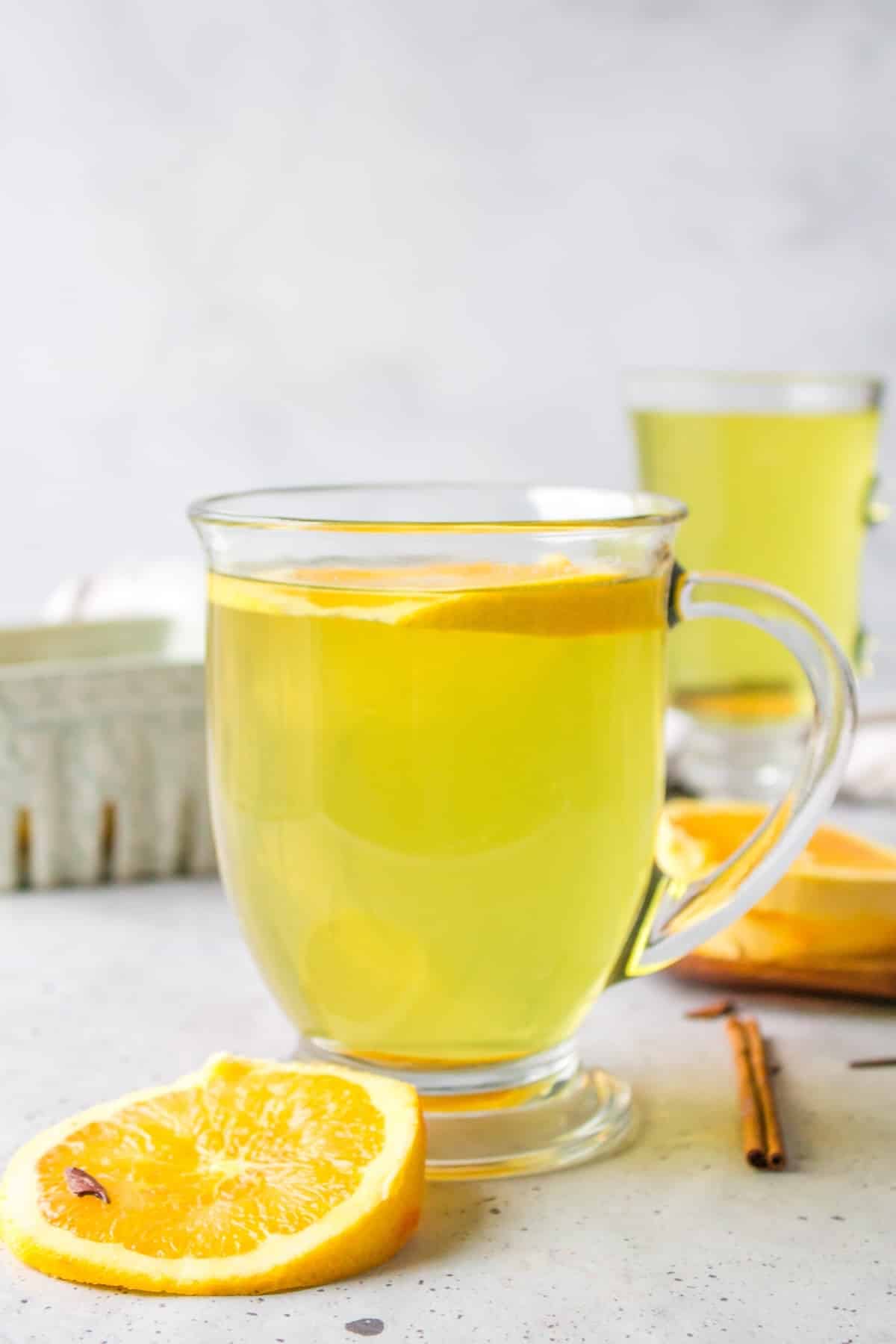
More Healthy Tea Recipes You Might Like
Don’t Miss These Anti-Inflammatory Drinks
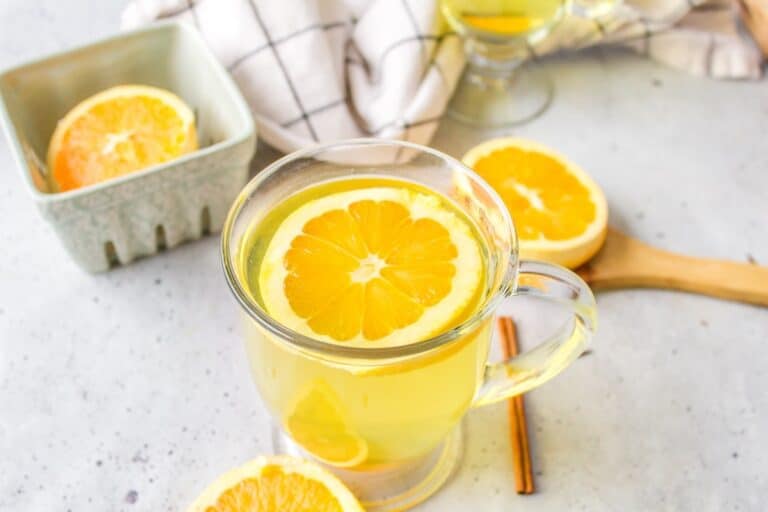
Orange Peel Tea Using Fresh or Dried Orange Peels
This Orange Peel Tea recipe is a super healthy hot drink made by simmering organic orange peels in water, with options to add flavors like cinnamon. Full of vitamin C and antioxidants, it’s a great health-promoting beverage.
- Total Time: 20 Minutes
- Yield: 2 Servings 1x
Ingredients
- 2 organic oranges (only the peels will be used)
- 4 cups water
- 2 teaspoons raw honey (optional, for sweetness)
- 1 cinnamon stick (optional, for added flavor)
Instructions
- Wash the oranges and pat them dry with a clean towel. See notes for using dried orange peels.
- Use a vegetable peeler or a paring knife to peel the oranges, aiming to get only the orange part of the peel and minimizing the white pith, which can be bitter.
- Bring the 4 cups of water to a gentle boil in a pot.
- Once boiling, add the orange peels and cinnamon stick. Reduce the heat and let it simmer for about 10 minutes. The longer you simmer, the more intense the flavor.
- Strain the tea into cups, removing the orange peels and cinnamon stick.
- Sweeten with honey or your preferred sweetener, if desired.
- Serve warm and enjoy!
Notes
- You can also add ginger slices to the pot for additional flavor and health benefits. I suggest peeling and slicing about a 1-inch piece of ginger if you want to include it in the pot with the orange peels.
- You can also make this recipe using dried orange peels. Simple measure out 1 tablespoon of dried orange peels per one cup of water and follow the instructions above.
- You can easily double or triple this recipe. Let the tea cool and then store in a covered glass jar in the refrigerator. Reheat before serving.
- Use filtered water to make your tea to avoid any chlorine flavor.
- USING DRIED ORANGE PEELS: simply measure out 1 tablespoon of dried orange peels per cup of water and follow the instructions above.
- Prep Time: 5 Minutes
- Cook Time: 15 Minutes
- Category: Beverages
- Method: Stovetop
- Cuisine: Healthy
- Diet: Vegetarian
Nutrition
- Serving Size: 1/2 of recipe
- Calories: 2
- Sugar: 0.4 g
- Sodium: 19 mg
- Fat: 0 g
- Saturated Fat: 0 g
- Carbohydrates: 0.5 g
- Fiber: 0 g
- Protein: 0 g
- Cholesterol: 0 mg
Don’t forget to join my newsletter list to get exclusive clean eating recipes and tips. The newsletter is 100% free with no spam; unsubscribe anytime.
About the Author: Carrie Forrest has a master’s degree in public health with a specialty in nutrition. She is a top wellness and food blogger with over 5 million annual visitors to her site. Carrie has an incredible story of recovery from chronic illness and is passionate about helping other women transform their health. Send Carrie a message through her contact form.
Note: this post is for informational purposes only and is not intended as medical advice. Please consult your healthcare provider for recommendations related to your individual situation.



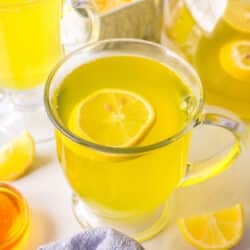
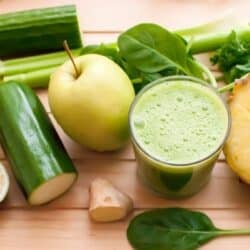
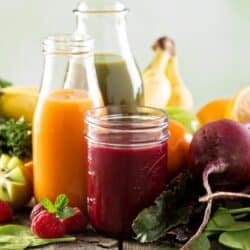
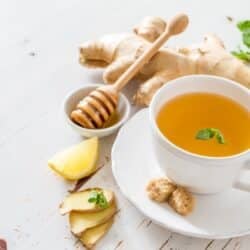





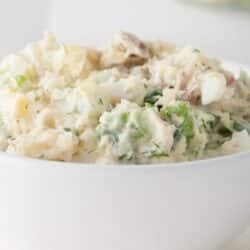
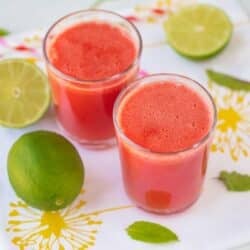


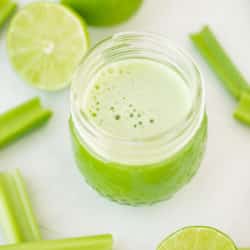






This tea is so, so good! I actually don’t use honey, I drink it straight with no added sweeteners.